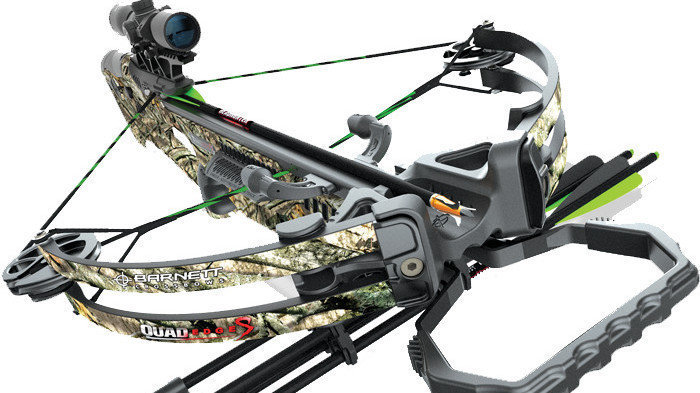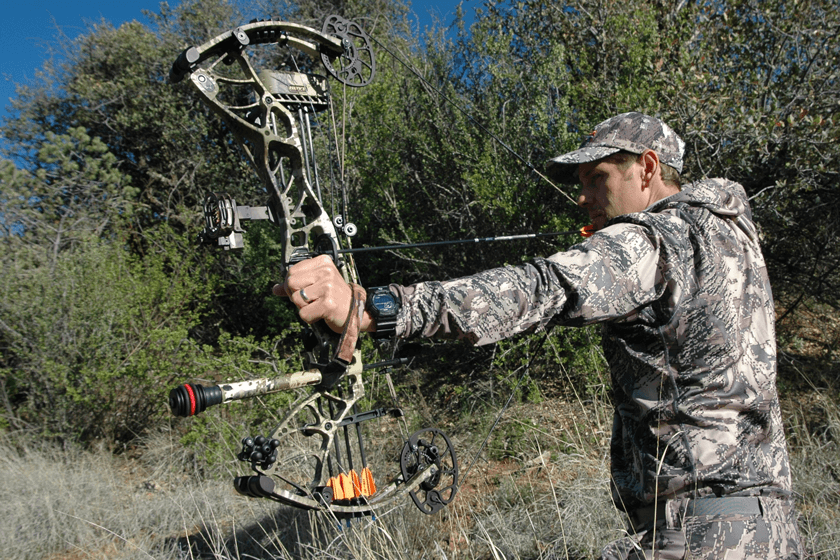The unique safety guideline for crossbows is always keeping your finger off the trigger until ready to shoot. Crossbows require the shooter to exercise caution by keeping their fingers away from the trigger until they intend to fire, ensuring safety during handling and preparation before shooting.
This particular safety guideline is specific to crossbows and distinguishes them from other types of firearms and bows. Crossbow users must be mindful of this guideline to prevent accidental discharges and maintain a safe shooting environment.
Proper Crossbow Grip and Finger Placement:
Holding a crossbow correctly is vital for safe and accurate shooting. Remember, place your dominant hand firmly on the grip, and support the weight with your non-dominant hand under the forearm. Keep your index finger above the trigger but outside the trigger guard.
Avoid wrapping your fingers around the rail or string, as it might cause injuries when shooting. Always maintain a firm grip for control and safety.
Safely Loading and Unloading a Crossbow:
Loading and unloading your crossbow correctly is crucial for both safety and functionality. Before loading, make sure the crossbow points in a safe direction. Use a cocking device according to the manufacturer’s instructions.
Ensure the string aligns securely with the barrel track and that the bolt sits fully seated and aligned with the string groove. Never load a crossbow with a bolt already in it, as it could accidentally discharge.
When unloading, follow the reverse steps, keeping fingers away from the trigger and string. Always handle a loaded crossbow with extreme caution.
Using a Cocking Device for Safety and Ease:
Cocking a crossbow manually requires strength and precision, but a cocking device offers safety and ease.
It ensures consistent and proper cocking, reducing the risk of injuries and preventing strain on the limbs. A cocking device also maintains consistent draw weight for accurate shots and prolongs the crossbow’s performance.
Engaging the Safety Mechanism:
Always engage the safety mechanism before handling the crossbow, following the manufacturer’s instructions. The safety switch is usually near the trigger, and when engaged, it locks the trigger to prevent accidental firing.
Double-check the safety before any maneuvering. But remember, never rely solely on the safety mechanism and treat the crossbow as loaded. Safety mechanisms may vary by model, so understand your crossbow’s specific features.

Crossbow Bolt Safety:
Using the right bolts is essential for crossbow safety. Each crossbow model requires specific bolts for accuracy and safety. Ensure bolts are securely seated and aligned. Misaligned or loose bolts can lead to unpredictable shots.
Regularly inspect bolts for damage, and replace damaged ones immediately. Store bolts in a secure and dry location, away from sharp objects and in an upright position to maintain their straightness.
Suppressed Noise and Vibration:
Reducing noise and vibration in crossbows is crucial for accuracy and safety. Excessive noise can startle game animals and affect shooter aim.
It can also lead to health issues like joint pain and hearing damage. Dampeners and silencers are designed to minimize vibrations and noise, contributing to hunting success, accuracy, and shooter comfort.
The Significance of Noise and Vibration Reduction:
Crossbows, designed to launch arrows with force, produce vibrations and noise. Manufacturers reduce these through dampeners and silencers in the limbs, string, and accessories.
Excessive noise and vibrations can startle game animals, affect aim, and lead to long-term health issues. Dampeners and silencers enhance stealth, accuracy, and shooter comfort.
Utilizing Dampeners and Silencers:
Dampeners absorb vibrations, while silencers reduce noise when firing a crossbow, making it less audible to game animals and others nearby. These features increase hunting success, accuracy, and shooter comfort.
Enhancing Hunting Success and Shooter Comfort: Reducing noise and vibrations increases hunting success by keeping the shooter undetected. It also improves accuracy, ensuring humane kills, and enhances shooter comfort, reducing physical strain and improving shooting performance.
Emphasizing suppressed noise and vibration in crossbows is crucial for safety. Dampeners and silencers contribute to accuracy, safety, and a more comfortable shooting experience.
Frequently Asked Questions For Which Safety Guideline Is Unique To Crossbow?
What Are The Safety Guidelines Specific To Crossbows?
Crossbow safety guidelines include keeping your finger off the trigger until ready to shoot, never firing without a target, and using a crossbow-specific cocking device. Always follow the manufacturer’s instructions and wear protective gear such as goggles and gloves while handling a crossbow.
Why Is Proper Crossbow Alignment Essential For Safety?
Proper crossbow alignment ensures that the arrow flies straight and reduces the risk of misfires or injury. Aligning the string, arrow rest, and sight correctly helps in achieving accuracy and prevents accidents caused by arrows flying off course.
How Can I Ensure Safe Handling And Storage Of A Crossbow?
To safely handle and store a crossbow, always treat it as if it were loaded, keep the safety engaged until ready to shoot, and never point it at anything you don’t intend to shoot. Store the crossbow in a secure and locked place, away from children and unauthorized individuals to prevent accidents.
Conclusion
To conclude, crossbows, being a unique and powerful weapon, come with specific safety guidelines that should be followed to ensure a safe and enjoyable experience. The importance of a proper cocking device cannot be underestimated, as it helps prevent accidents and injuries during the loading process.
Using quality arrows that are specifically designed for crossbows is also crucial for maintaining accuracy and preventing damage to the weapon.
Additionally, always keeping fingers away from the string path and using a finger guard or shooting gloves can help prevent painful and potentially dangerous accidents.
Lastly, regular maintenance and inspections of the crossbow are vital to ensure its optimal performance and safety. By adhering to these safety guidelines, crossbow enthusiasts can maximize their enjoyment while minimizing the risk of accidents and injuries. Stay safe and happy shooting!

General Manager & Auditorial Head.
Killian Jake is a World Sports Traveler and hobbyist sports lover. By exploring different sorts of playing modules like indoor, outdoor, and many more. As for professionalism and writing, it’s helpful to give you the right suggestions on different games and sports.





